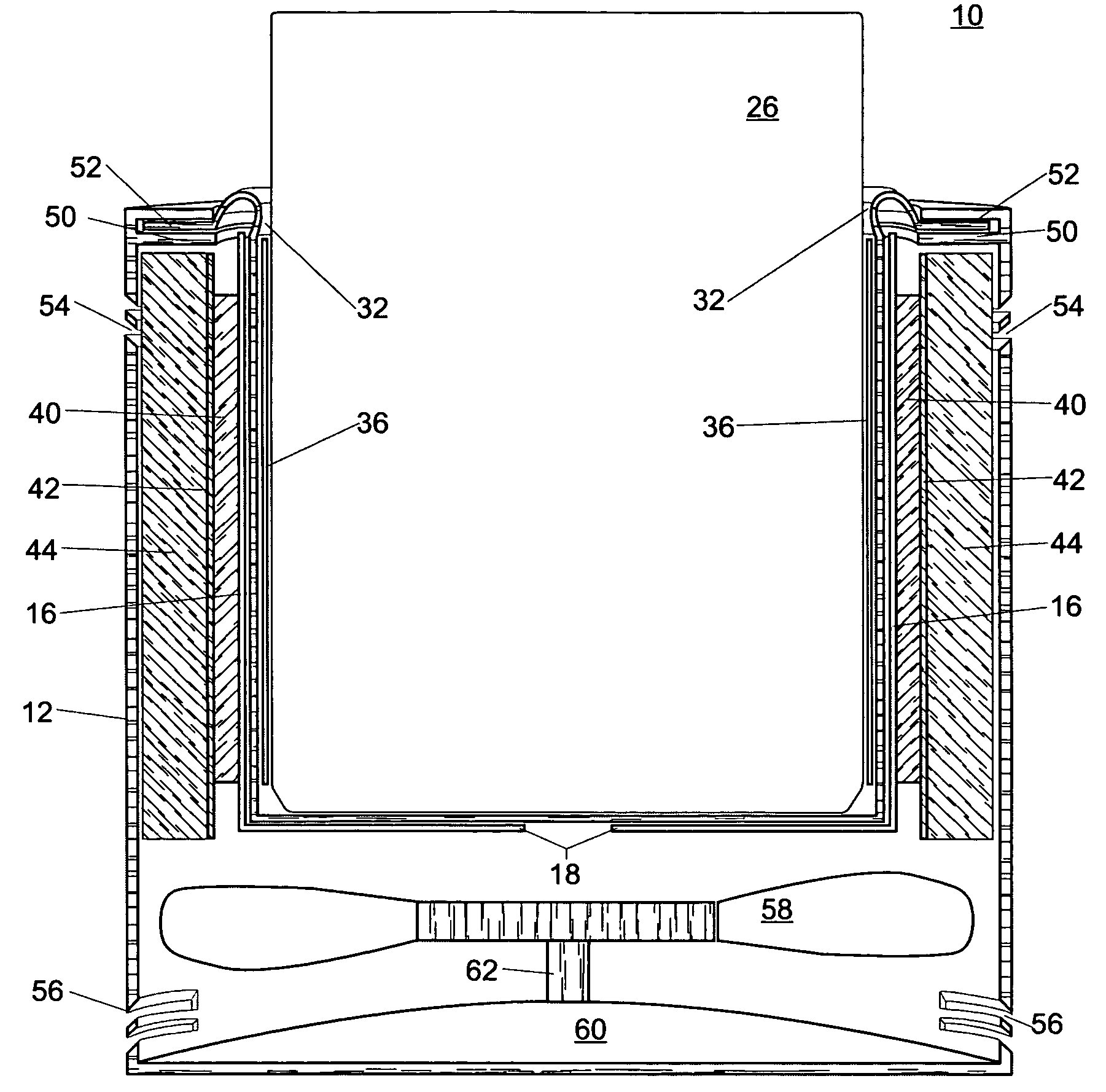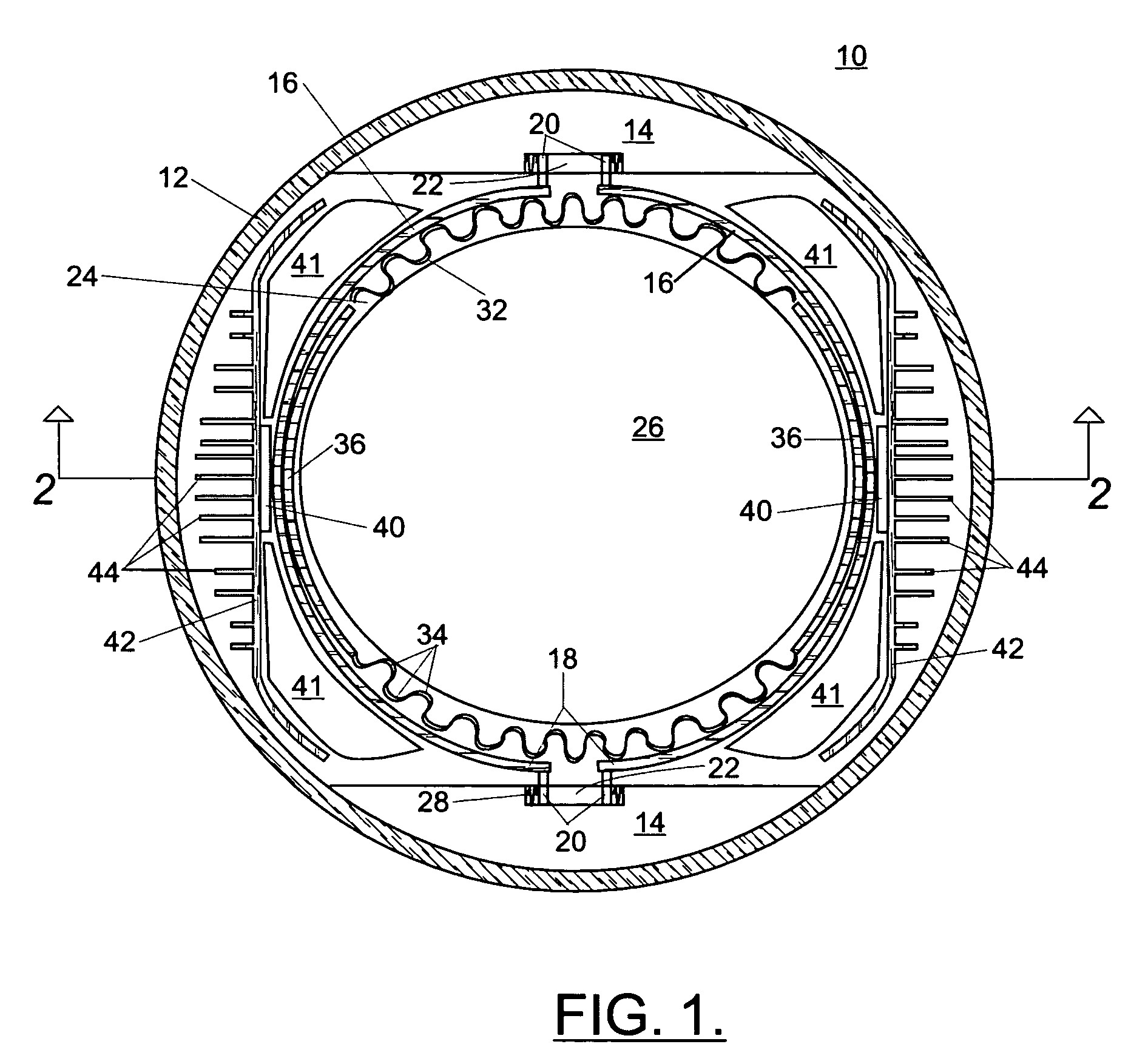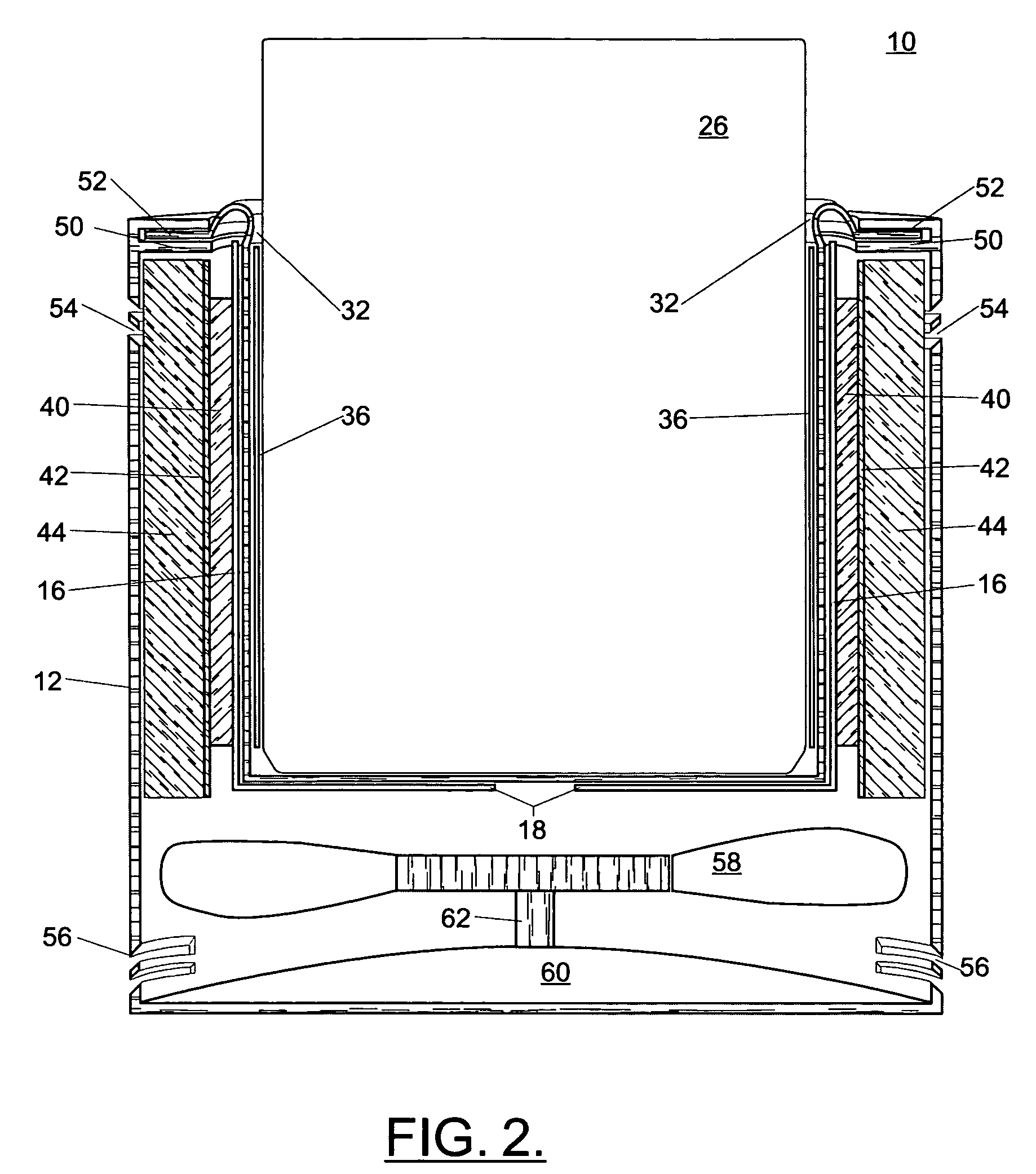Thermoelectrically heated/cooled cupholder system
- Summary
- Abstract
- Description
- Claims
- Application Information
AI Technical Summary
Benefits of technology
Problems solved by technology
Method used
Image
Examples
Embodiment Construction
[0021]Referring now to the drawings, a thermoelectrically heated and cooled cupholder system 10 according to the present invention is shown in a plan view in partial cross-section in FIG. 1. Outer frame 12 is generally cup-shaped, i.e., generally cylindrical and open at the top thereof, and is ideally integrable with the console of an automobile (not shown), for instance. Outer frame 12 is ideally made of plastic or another similarly suitable material.
[0022]Outer frame 12 is provided on the interior thereof with a pair of mounting fixtures 14, which will be described in greater detail below in connection with an expansion feature of the invention. A pair of semi-cylindrical cupholder units 16 cooperate to form a generally cylindrical cupholder member 18. Cupholder member 18 is ideally made of a heat-conductive material such as aluminum or another metal suitable for conducting heat from or to substantially all of the surface area of cupholder member 18.
[0023]Each of the cupholder uni...
PUM
 Login to View More
Login to View More Abstract
Description
Claims
Application Information
 Login to View More
Login to View More - R&D
- Intellectual Property
- Life Sciences
- Materials
- Tech Scout
- Unparalleled Data Quality
- Higher Quality Content
- 60% Fewer Hallucinations
Browse by: Latest US Patents, China's latest patents, Technical Efficacy Thesaurus, Application Domain, Technology Topic, Popular Technical Reports.
© 2025 PatSnap. All rights reserved.Legal|Privacy policy|Modern Slavery Act Transparency Statement|Sitemap|About US| Contact US: help@patsnap.com



